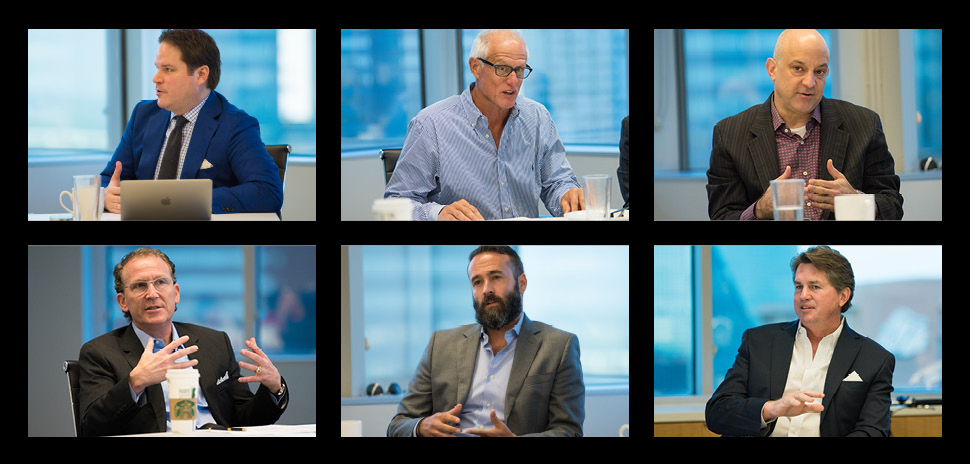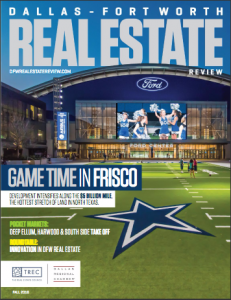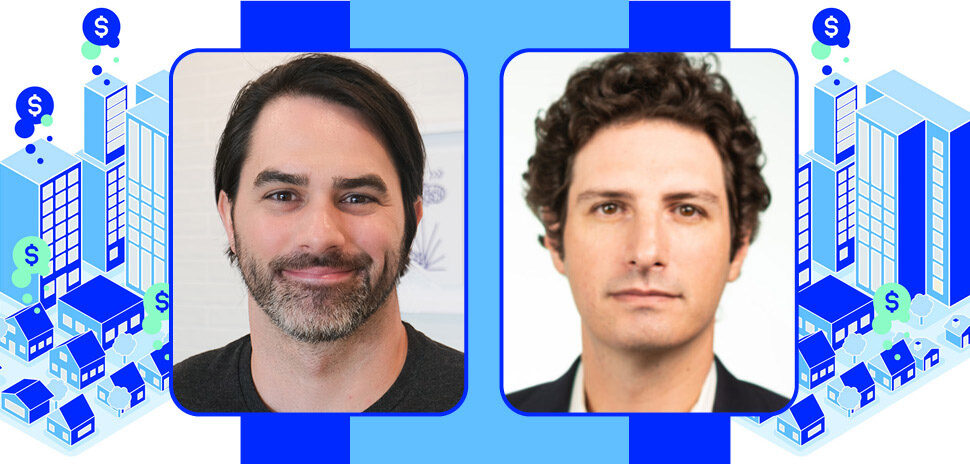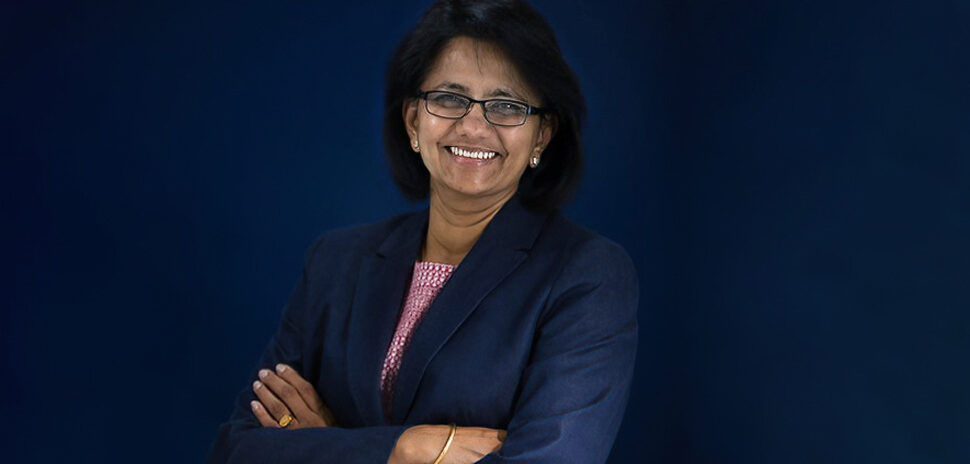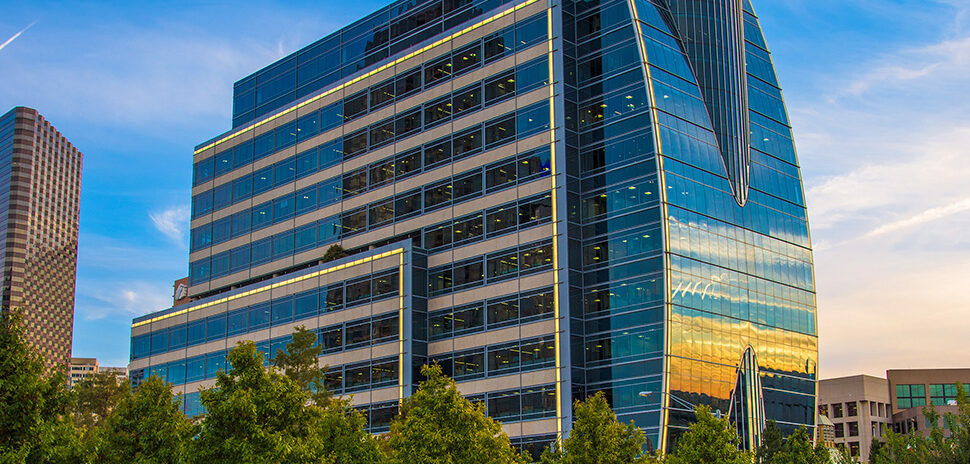This is the final installment in our innovation in real estate roundtable series.![]()
Dallas-Fort Worth is home to some of the most talented innovators in the industry. Christine Perez recently had a chance to catch up with our panel of real estate experts to chat about how they are leading the industry through a tsunami of change.
PANEL
 Scott Polikov, principal and founder of Gateway Planning, is a national leader
Scott Polikov, principal and founder of Gateway Planning, is a national leader
advancing the new economics of place. He is known for his work in unlocking the
true value of neighborhoods and focusing on public-private partnerships.
 Jeffory Blackard, founder and CEO of Blackard Global, has developed more than
Jeffory Blackard, founder and CEO of Blackard Global, has developed more than
20 master-planned communities. He’s the driving force behind the “NeoRetroism”
development philosophy.
 Mike Ablon, founding partner of PegasusAblon, runs a multidisciplinary
Mike Ablon, founding partner of PegasusAblon, runs a multidisciplinary
development and investment firm focused on the integration of emerging
markets and evolving demographic trends.
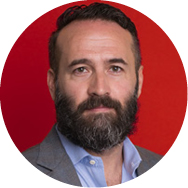 Heath May, associate principal at HKS, directs the firm’s LINE (Laboratory for
Heath May, associate principal at HKS, directs the firm’s LINE (Laboratory for
INtensive Exploration), which focuses on advancing architecture and design
through technology.
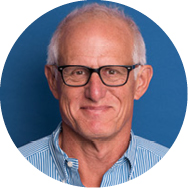
Robert Shaw, managing partner of Columbus Realty Partners, is one of the most active multifamily developers. He helped pioneer Uptown and was a proponent of
walkability decades before the movement caught on nationally.
 Jeff Eiting, vice president at CBRE, is the co-leader of the firm’s technology and
Jeff Eiting, vice president at CBRE, is the co-leader of the firm’s technology and
media practice in Dallas. As a trusted advisor, he works with startup and mid-cap
corporate clients.
PEREZ: Let’s focus on the built environment itself. What trends are shaping the future of architecture and design, both in commercial and residential space?
POLIKOV: I would like to hear Jeff talk about how the preferences are changing from the tenant perspective in terms of office space. The office market is really something that is obviously very different today than it was even five or six or seven, eight years ago. Where for example when I go to work, none of us are in our formal offices. We always go to the conference room and sit together. I have millennial partners. I never want to go into my office, but the building is designed around a building that’s 15 or 20 years old.
EITING: From a tenant perspective it’s back to mobility. Tenants want the information faster. They are making decisions in real time. So I think it’s incumbent upon owners and people who market to tenants to come to the table having all the data. One of the things we track in my business is cycle times. We’ve found that transactions are moving much faster, and I think we are going to see transaction times continue to compress. I would also be remiss if I didn’t talk about what’s going on in the West End. We’ve mentioned what’s new is old, some of the oldest buildings in our community are in the West End. Some are 110 or 115 years old. And if you look at some of the public-private partnerships that are happening — they’ve been going on for three or four years and are just now coming to fruition. The Dallas Innovation Alliance is working with public and private partnerships to try to build what they call a living lab, to have the connected home, connected car, connected office, and internet of things really be down there. If you look at the key stakeholders now — Granite Properties, Spear Street, Crescent and more to come — you have very capable owners that really understand real estate. Combine that with what’s going on from a technology perspective, I think you’re going start to see some cool things happening down there.
ABLON: You talked about office space. I’ll talk about multifamily for a second. Ten years ago, somebody would tout bedroom size and ceiling fans and flooring. Now, it’s thought of the same way you think of going on a cruise. You don’t talk about your room. You talk about the overall experience. You are buying a ticket and the room came with it.
SHAW: It’s true.
ABLON: When people are looking at housing and where they are going to live, they are looking at the whole fabric, where it sits in the city, is it on a jogging path, what’s the overall package and the room kind of comes with it. Developers at the forefront are designing for the experience as much as the room. And I think that creates great places. And it’s all found on the internet. It’s not the apartment finder, it’s the finger finder. It’s really fantastic. The internet is doing great things and it’s driving us to an experienced lifestyle. The end result is better product. And I think you see the same thing in retail. People say the Internet is ruining the real estate industry in retail. No, it’s not. It’s making it better. Quality places and quality developments are thriving right now because people want to be there. People still want to shop in person because that’s part of the experience. They shop on the internet but they buy where it feels good because they already got the commodified pricing done.
SHAW: Yes, I agree. On the whole technology connection, nobody has a home telephone anymore. Everyone has cell phones. They are also rapidly getting rid of cable. That’s kind of important to us because we get some of that revenue stream. But that’s going away. People can control their thermostats or their door locks with their cell phone. We haven’t gotten to the appliances but they don’t use them for anything other than to store beer anyway. They never turn on their ovens. So if we built an apartment with how people really live, there would be no oven, no range, just a little refrigerator.
PEREZ: And a microwave.
EITING: Are they leasing their apartments remotely?
ABLON: Sixty percent get online between 10 o’clock at night and 3 o’clock in the morning.
SHAW: Yeah, a big part of that is part of that online.
POLIKOV: Outside of Dallas, in Plano, Flower Mound, Argyle, McKinney, there still seems to be a very strong anti-apartment fervor. Some of it is just a painful reminder of an old model. Some of it is racism. I’m just going to call it out. Some of them are just concerned that apartments don’t reinvent themselves after a lifecycle. From a technology standpoint, I do believe that stick-built apartment technology needs to improve. That’s how we present it, as part of a bigger neighborhood with connectivity and amenities. And that’s how we are getting multifamily approved. However, the big question that a lot of these city councils are asking is, what is going to happen to them in 20 years. And with 30,000 all the way up to 70,000 new units coming online, I’m afraid that a lot of what is being constructed, if it does not retain the quality and to be rehabbed properly, then even if it’s in the best context I think we are going to create our own worse problem long-term. We have to figure out how to deal with rehab on stick-built apartments and keep them high quality.
SHAW: The multifamily project today versus what was being built 30 years ago — there is no comparison.
POLIKOV: I agree with that.
SHAW: They are a completely different model. Multifamily was once used to inventory land. Post World War II, developers took what they learned building military barracks and built a lot of very cheap housing very quickly to meet a burgeoning demand. Now, when it’s become a part of urban settings, you can’t be tearing them down every 30 years. But I will argue that in fact the multifamily today, stick built is so much better, and there is no reason it couldn’t be rehabbed multiple times. It could be here in 100 years, 200 years.
POLIKOV: I think we have got to get that word out. There is the perception that any multifamily constructed today is going to either be blight or it’s going to have to be torn down in 20 to 30 years. I think there is a deficit of knowledge (among cities).
SHAW: It’s not inherent in the physical nature. It might be inherent in the customer demand. All these millennials might decide they need to own a single family home, which could cause it. But it’s not inherent in the physical nature.
PEREZ: How is virtual reality helping developers or communities see the future of their development?
MAY: There’s a lot of interest in virtual reality right now. For me, augmented reality holds a lot more potential. With virtual reality, I’m seeing what’s not there. With augmented reality, I can see a layer of what might be over what’s already here. Having some physical things allow you to experience the space a little better. But just from a philosophical standpoint, I think you can start to see the potential better. We’re using (VR) occasionally, but I don’t think we’ve tapped the potential on how to really use it yet. Healthcare environments are starting to use that more, because how a practitioner moves about a space is very important to the safety of someone. Some of the providers are even further beyond the designers with how they are using that right now. Microsoft HoloLens, that augmented reality type of technology, is going to start to change things. Recently we have been able to start to use that to start to design in that augmented virtual space.
ABLON: HKS used augmented realty on a building that we are doing; you guys are at the front end of the curve. You are creating it as you are going, and I don’t mean just augmented reality. In creating how you are going to put what together and what you are going to use it for, you are actually using it from a customer base, not a design base yet. We have used augmented reality, but on the marketing side.
PEREZ: What are you most excited about in the future with regard to innovation in real estate?
BLACKARD: I’m excited about proving my theory over and over again across the country. And getting developers to understand what I’m really saying. Everyone has a preconceived notion of what they think a village is; I want them to understand that it serves the needs of a people group and what that really is and how we design and build things.
EITING: I’m excited to be in Dallas. If you look at the entrepreneurial spirit that has always been here, and you look at what’s going on from a technology perspective, we’re just sort of at the very tip of the internet of things and our industry, real estate, is one of the last industries to be transformed. If you look 10 or 15 years out, things are going to be dramatically different. I’m excited to be a part of it.
MAY: The challenges are always what excite me the most. And I think something that is very challenging to me but also is a tremendous opportunity is thinking about complexity and complication. We are understanding more and more about what people want and what they need. But the challenge is to design buildings that are more simple. It sounds contradictory, but I think to facilitate the complex systems, the communities, the cities that we live in, a simple building has the flexibility we need. Because we don’t know what’s going to happen in the future. There’s conjecture about what might happen five or 10 years down the road. We have to provide buildings that are flexible enough to allow the systems to grow. As demand for cars continues to drop, could the office tower where half the floors are for parking, could those start to infill with housing? Things like that can transform cities, and I think are where our mindset needs to be from a building standpoint.
POLIKOV: I’m excited that the value proposition in real estate design, development, and finance has shifted from looking at the product to looking at the happiness of the person in the neighborhood that they are living in or locating their business in. It’s what Mike said about the cruise. It’s also exciting that the real estate community is now looking more outside the building for the value proposition than inside the building, and I think that will create more multigenerational stability.
SHAW: So I’m going to attribute this quote to Trammell Crow. I’m sure it was him. Later in his life, someone asked him the same type of question, and he said, “Well, America isn’t built yet.” At the time, it was profound to me and it still resonates with me. Today, America’s not built yet, and I can continue to have a part in building it. So that’s what has me excited.
ABLON: I would have a very similar feeling of gratitude. There are moments of windows in the larger span of history when Gutenberg has the printing press and James Watt perfects the steam engine where entire worlds change very radically in short windows of time. We are living in one of those periods — all of us. And I am absolutely grateful that I am living in a time of radical change — and not just the change itself but the speed of that change is radical. It’s fun to begin to see where the demographics and the culture and the technology overlap on a city fabric and work in that, especially a very open-minded and entrepreneurial city. I’m just grateful to be here right now.
This is the final installment in a three-part series of the roundtable, “Real Estate Revolution,” that originally appeared in the Fall 2016 edition of the Dallas-Fort Worth Real Estate Review. Christine Perez moderated the panel. The roundtable was edited for brevity and clarity.
READ NEXT
How DFW is a Leader in Real Estate Innovation (Part 1)
Architecture, Design: What Does the Future Hold? (Part 2)
GET THE REAL ESTATE REVIEW
Sign up to get the quarterly digital edition of our sister publication, Dallas-Fort Worth Real Estate Review, here.
Delivering what’s new and next in Dallas-Fort Worth innovation, every day. Get the Dallas Innovates e-newsletter.

